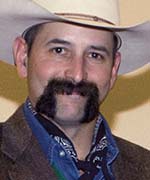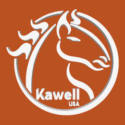There are few occupations that I know of which give a practitioner the same feeling of accomplishment that teaching farriery does. Granted, the only things I have done since high school have been shoeing horses, some time in the Army and teaching farriery since 1992. So you have to understand that I have a somewhat biased view on this subject.
As an educator in this industry, a person has to be able to deal with a lot of different situations; some dangerous, some funny, some serious — but all are important. It is one thing to teach a trade in a controlled environment with inanimate objects as is done in woodworking shop or auto-mechanics school. With farrier science, you have to add not only some interesting characters in the form of customers and students, but also a large number of horses that the general practitioner does not want to shoe.
Information Is Out There, It’s Your Responsibility To Find It
One of the things about this trade that I think is unique is the fact that the top practitioners are so willing to share their knowledge with others in the field. In a lot of professions, people keep what they know to themselves so that they can have a perceived edge over the competition. Perhaps the fact that most of us are interested in helping as many horses as possible keeps the sharing of information flowing. It does not hurt that there is so much work out there for those that wish to become good at this trade. By helping a fellow farrier get better, you are also helping the horses that are cared for by that farrier.
There are a lot of resources for farriers in this industry. However, there is also a risk of becoming isolated and seeing only your own work being done day after day. Some will continue shoeing horses the same way year after year, never taking their skills to a higher level. Since it is possible to still make a good living in isolation, some folks resist letting their work be judged by other farriers. This is a big mistake in my opinion, because most of the better farriers I know will do their best to avoid embarrassing someone that is trying to improve.
No matter what level you are at, the fellow at a higher level was there once as well — even if you have just finished nailing on the first horseshoe you ever touched. Whenever possible, ride with an expert. Whether you want to learn about a new technique, or just want to see how someone else works, these types of exchanges can be invaluable.

Chris (left) and Cody Gregory approach farrier contests from different perspectives. Both farriers, however, believe competing helps them improve their skills and perform well under pressure.
New Ideas Aren’t All Good, Don’t Be Afraid To Challenge
A potential pitfall that comes from the amount of available information is that not everything available is good information. As a farrier, it is your responsibility to become knowledgeable enough to separate the wheat from the chaff. If new ideas do not make sense anatomically for the general equine species, it probably does not make sense at all. If you do not know enough anatomy to make a good decision, the horse and your business are bound to suffer.
As an educator, it is important that you not only know your anatomy, but also are able to teach that anatomy to young farriers.
Three Avenues Of Learning: Join, Attend And Compete
I think that all farriers, (especially new ones) should join the American Farriers’ Association, their local association, pursue certification, go to the International Hoof Care Summit, the AFA Convention and any local contest, clinic, certification, hammer-in or farrier gathering they can get to.
It’s amazing, but you can recharge your batteries by loading your contest gear, driving 500 miles, paying to shoe a horse and making shoes in an arena somewhere — and if you are successful, making a fraction of what you would have if you had stayed home and shod for half a day. I do not know exactly how that works, but believe me, it does.
Another big advantage of going to gatherings of farriers is the fact you get to meet some outstanding people who may become lifelong friends based solely on the fact that you share an occupation. My son, Cody, is getting into competing, and like most young competitors, he is going with dreams of winning. For me, the focus is completely different. I go to watch Cody compete, have some fun competing myself and learn a few tricks. However, the main reason I go these days is to see old friends and keep myself motivated about shoeing.
After a clinic or contest, I can’t wait to get home and get to shoeing.
Systematically improving on your skills can make the difference. In this profession, things are always changing and evolving. While having a goal and achieving it is huge, it is engaging in the process of farriery that is the key to becoming the best that you can be — and staying there.
Stay Abreast Of The Newest Developments And Ideas
With all the smart people in this industry, going to the International Hoof-Care Summit, conventions, clinics, etc., is also important so that a farrier can stay abreast of new ideas and techniques.
It can be easy to always use old methods, especially for someone like me. But I find that some of the new stuff is very effective. For the modern farrier, it is good for the horses you shoe that you are able to bring all the current knowledge to bear.
These resources are available to help you fine-tune your knowledge; knowledge that can be put to practical use on a daily basis, and that will put money in your pocket as a result,
Do you know what I love about shoeing horses? Everything. I often say this to my students and anyone willing to listen. And though that is true, I love teaching farriery as much, if not more. It is not what I expected it to be when I started, but I am thankful that I found this career. It is a rewarding way to make a living. If you think you might ever like to be a farrier educator, begin by becoming a great farrier. This is a trade that you can’t teach if you can’t do. ?r
With his wife, Kelly, Chris Gregory owns and operates the Heartland Horseshoeing School in Lamar, Mo. He is an American Farrier’s Association certified journeyman farrier and a Fellow of the Worshipful Company of Farriers of Great Britain.







